(a) Find the acceleration of the three masses shown in figure-2.116(a) and the extension in the spring. The force constant of the spring is 100 N/m. Assume all strings and pullies are ideal.
(b) Find the acceleration of the masses A and B just after the string snaps at P but in this case the spring is replaced by a string. Take g=10m/s2
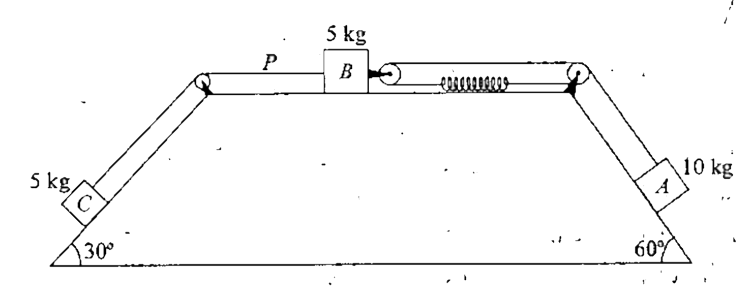
Step by step video & image solution for (a) Find the acceleration of the three masses shown in figure-2.116(a) and the extension in the spring. The force constant of the spring is 100 N/m. Assume all strings and pullies are ideal. (b) Find the acceleration of the masses A and B just after the string snaps at P but in this case the spring is replaced by a string. Take g = 10m//s^(2) by Physics experts to help you in doubts & scoring excellent marks in Class 11 exams.
Updated on:21/07/2023Topper's Solved these Questions
- NEWTONS LAWS OF MOTIONBook:PHYSICS GALAXY - ASHISH ARORAChapter:NEWTONS LAWS OF MOTIONExercise:Practice Exerice 2.1
Explore 1 Video
- NEWTONS LAWS OF MOTIONBook:PHYSICS GALAXY - ASHISH ARORAChapter:NEWTONS LAWS OF MOTIONExercise:Practice Exerice
Explore 4 Videos
- LINEAR MOMENTUM & ITS CONSERVATIONBook:PHYSICS GALAXY - ASHISH ARORAChapter:LINEAR MOMENTUM & ITS CONSERVATIONExercise:exercise 1.3
Explore 3 Videos
- RIGID BODIES AND ROTATIONAL MOTIONBook:PHYSICS GALAXY - ASHISH ARORAChapter:RIGID BODIES AND ROTATIONAL MOTIONExercise:Unsolved Numerical
Explore 63 Videos
Similar Questions
Find the time period of the oscilltion of mass m in figure a and b. What is the equivalent spring constant of the spring in each case. ?
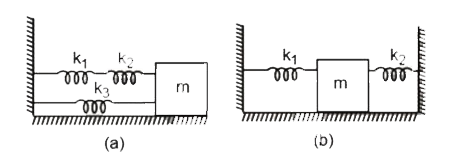
View SolutionTwo blocks A and B of same mass m attached with a light spring are suspended by a string as shown in fig. Find the acceleration of block A and B just after the string is cut.
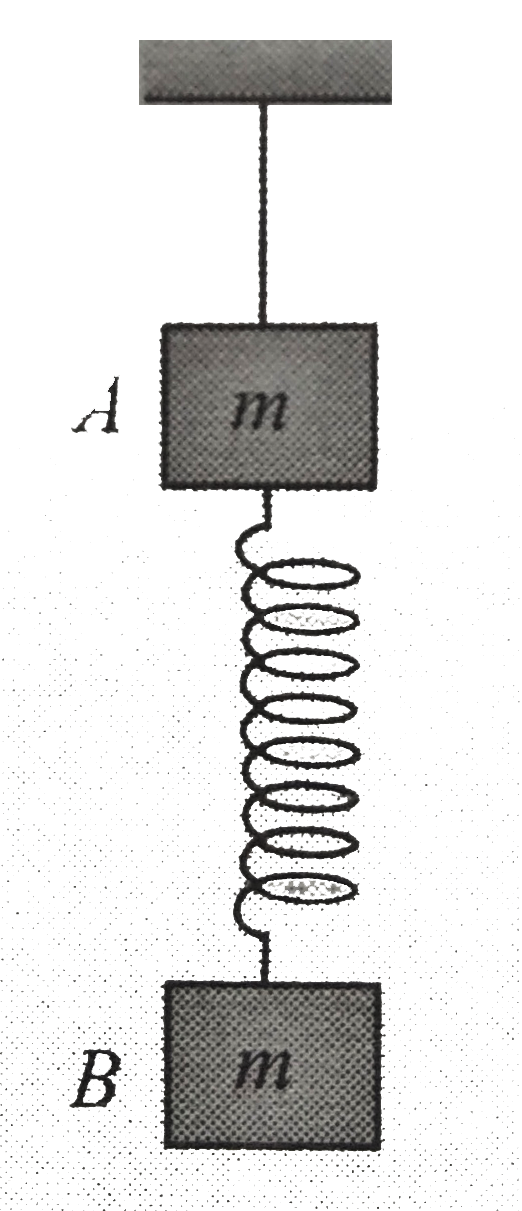
View Solution
Knowledge Check
The system shown in the following figure is in equilibrium and at rest. The spring and string are massless. Now, the string is cut. The acceleration of mass 2m and m, just after the string is cut, will be
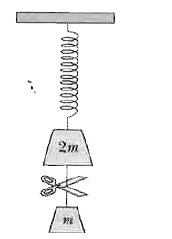 Ag/2 upwards, g downwards.Bg upwards, g/2 downwards.Cg upwards, 2 g downwards.D2g upwards, g downwards.
Ag/2 upwards, g downwards.Bg upwards, g/2 downwards.Cg upwards, 2 g downwards.D2g upwards, g downwards.In spring constant of the spring is 100 N/m Extension produced in the spring is:
(g=10m/s2)
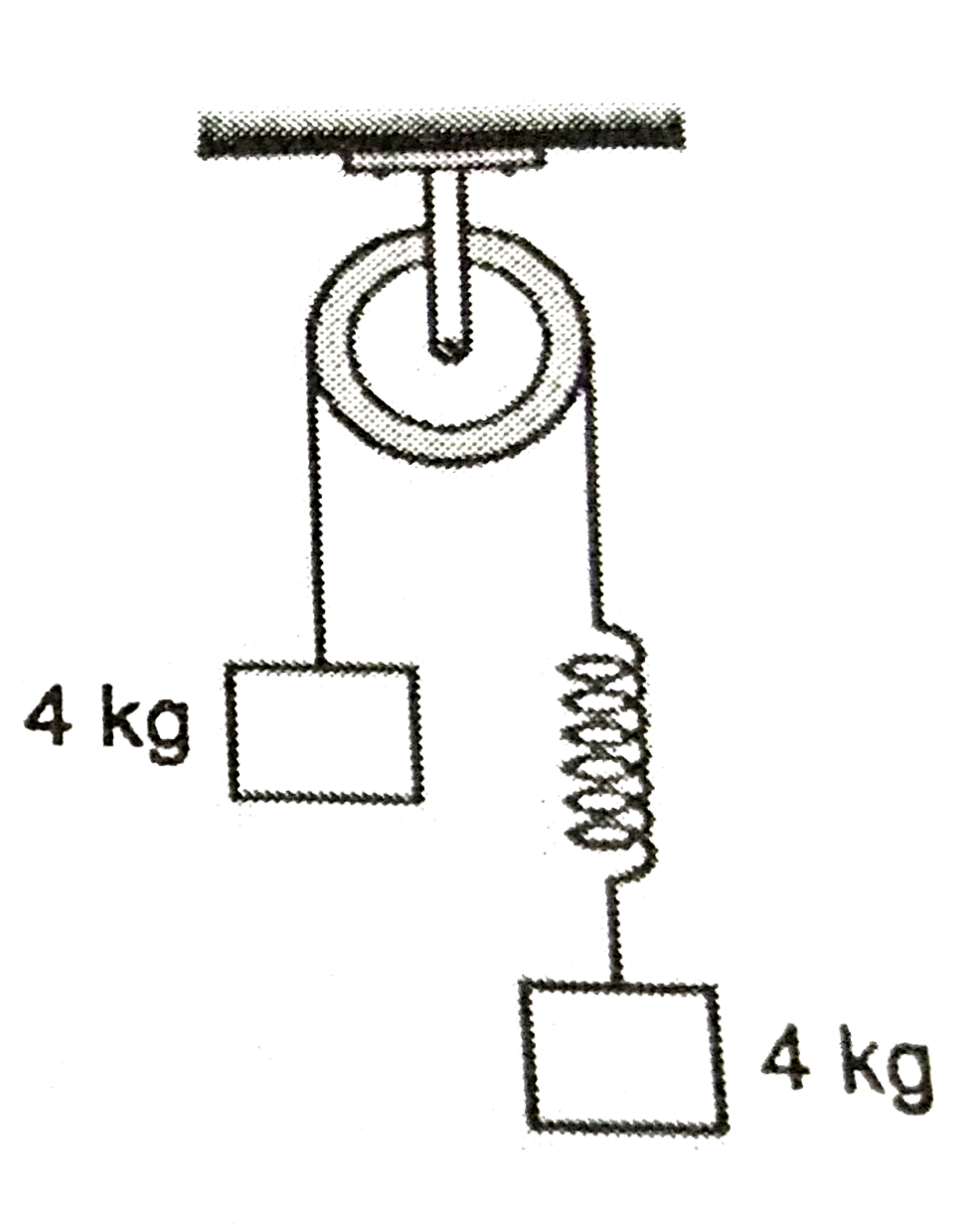 A10 cmB20 cmC30 cmD40 cm
A10 cmB20 cmC30 cmD40 cmSystem shown in fig is in equilibrium and at rest. The spring and string are massless now the string is cut. The acceleration of mass 2m and m just after the string is cut will be:
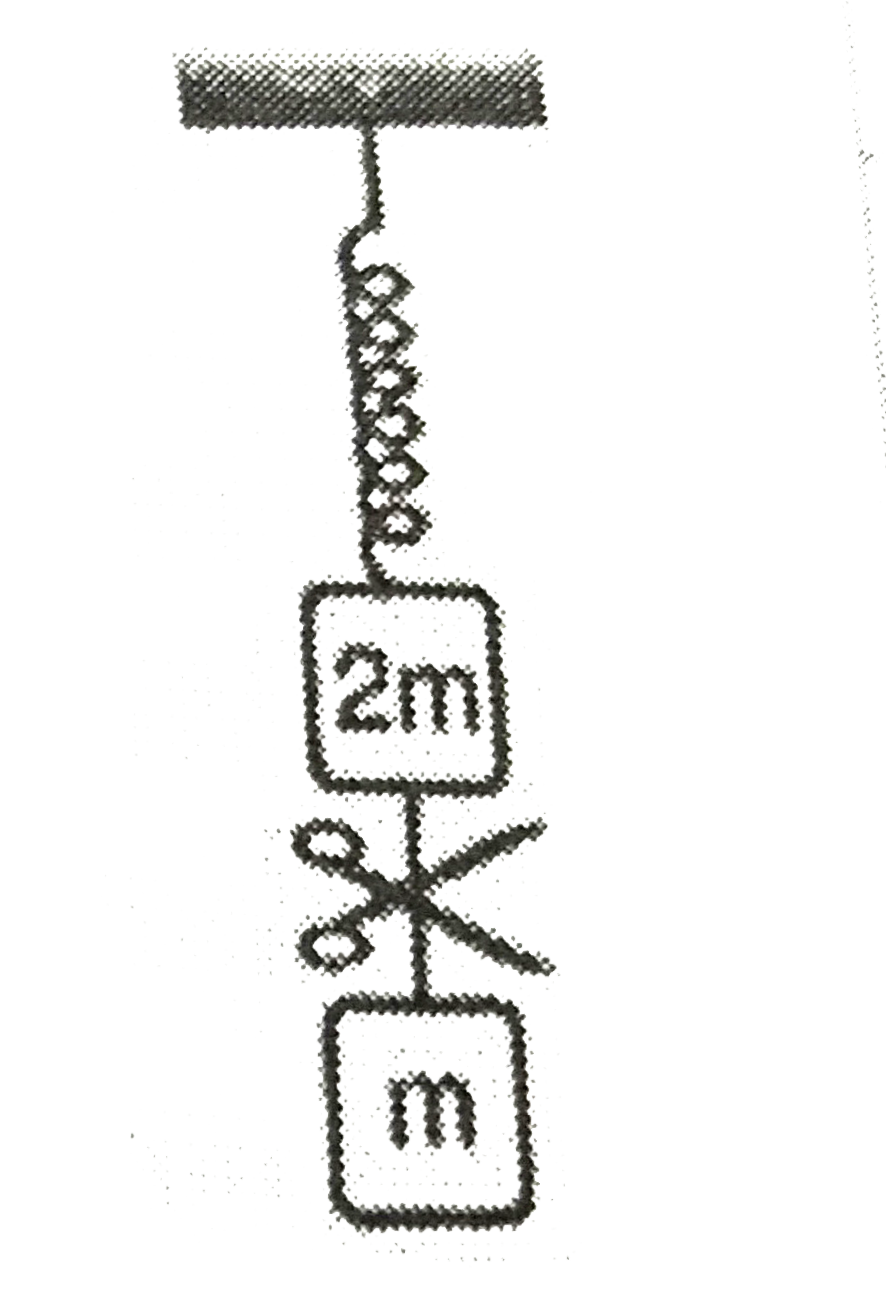 Ag/2 upwards, g downwardsBg upwards, g/2 downwardsCg upwards, 2g downwardsD2g upwards, g downwards
Ag/2 upwards, g downwardsBg upwards, g/2 downwardsCg upwards, 2g downwardsD2g upwards, g downwards
Two blocks A and B of same mass m attached with a light string are suspended by a spring as shown in fig. Find the acceleration of block A and B just after the string is cut.
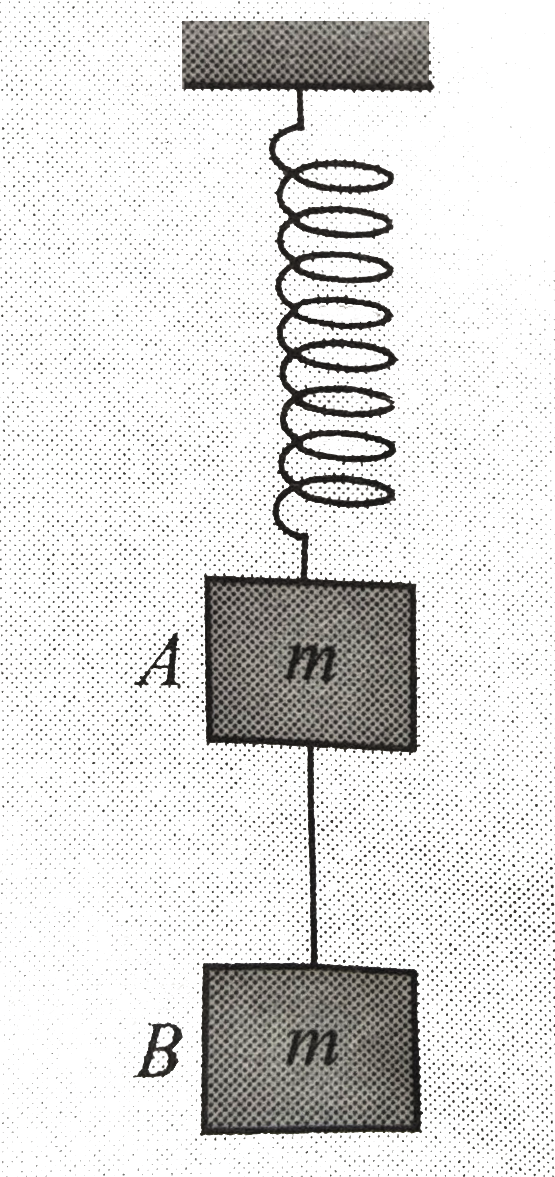
View SolutionThe string, spring and the pulley shown in figure are light. Find the time period of the mass m.
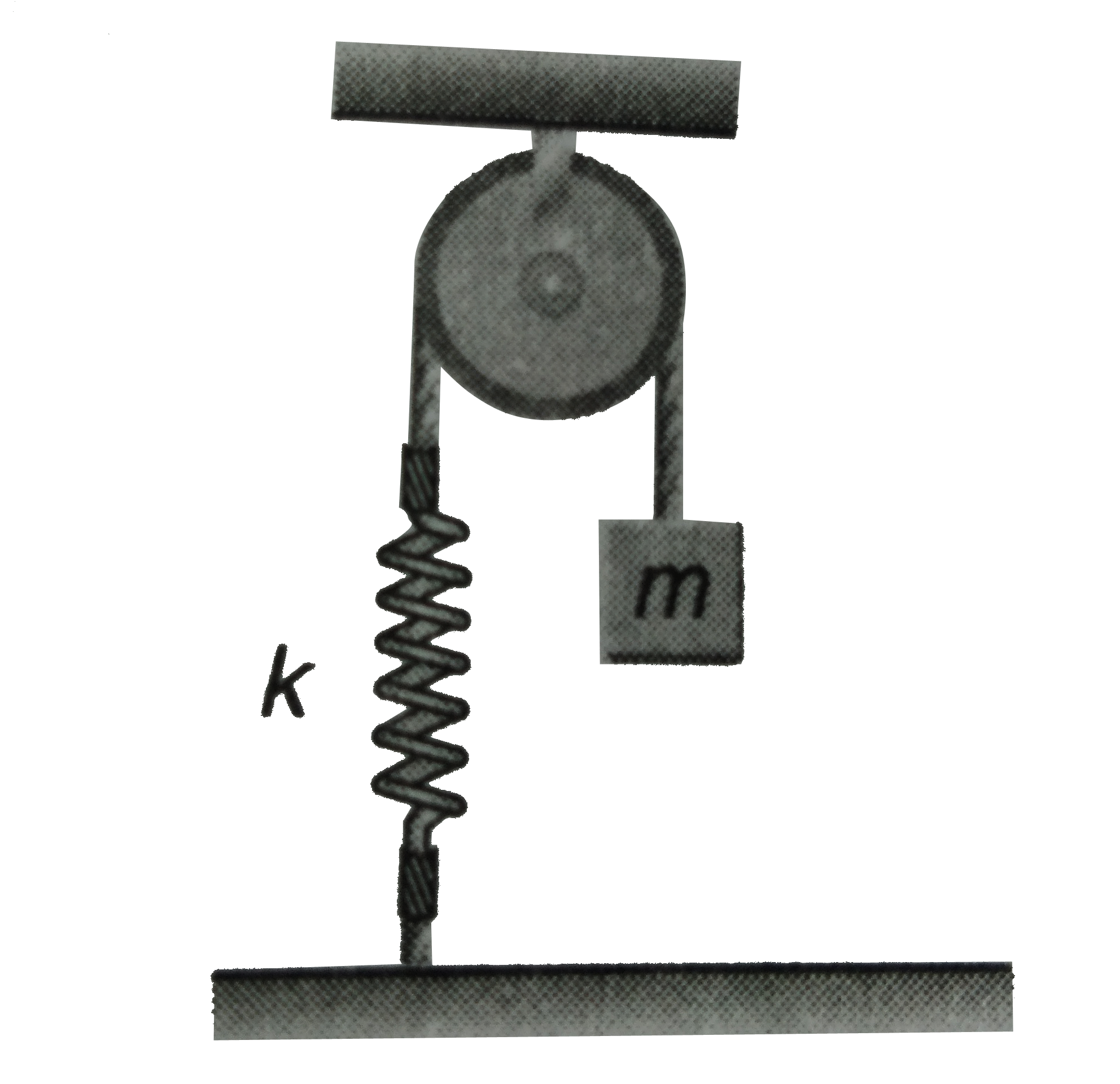
View SolutionThe string, the spring and the pulley shown in figure are light. Find the time period of the mass m.
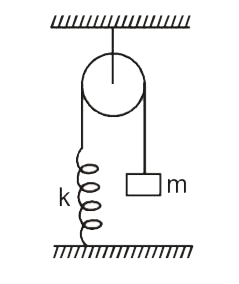
View Solutionfind the acceleration of the block of mass M in the situation shown in figure. All the surfaces are frictionless and the pulleys and the string are light.
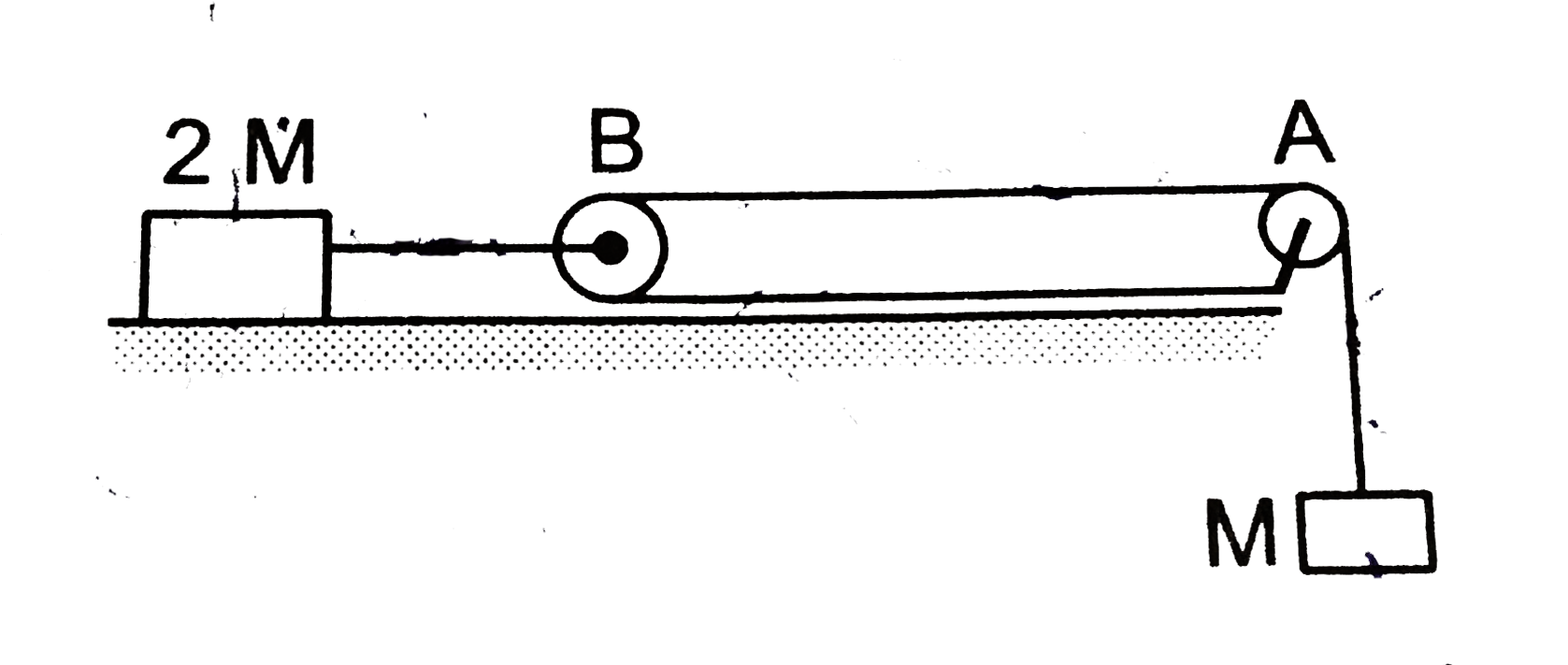
View SolutionTwo block of mass 4 kg and 5 kg attached a light spring are suspended by a string as shown in figure. Find acceleration of block 5 kg and 4 kg just after the string is cut.

View Solution

